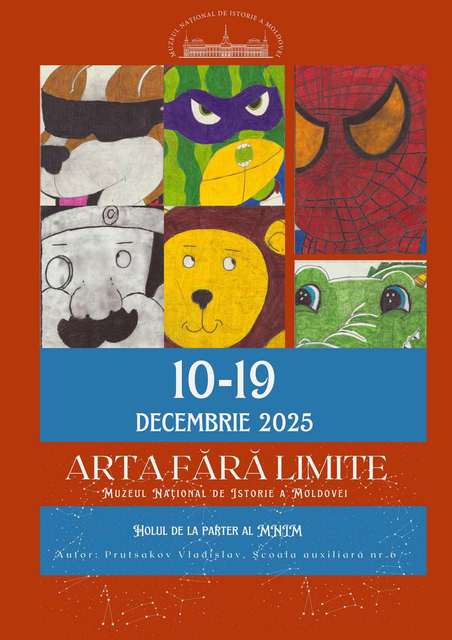  Events Archive Events Archive
“Echoes of War” exhibition Opens in Moldova
4 October, 2023
"Echoes of War" by a Syrian photojournalist, Omar Sanadiki opened on 4 October in the National Museum of History of Moldova. The exhibition depicts two distant, yet intertwined wars in Syria and in Ukraine. The photos in Ukraine were shot in June this year, and were brought to Chişinău by the European External Action Service (EEAS) as a collaborative project with the photographer. "Echoes of War" will stay on show until 31 October at the Museum. In his captivating photos, Sanadiki provides a reflective visual journey contrasting the turbulent atmospheres from the war that broke out in 2011 in Syria with those captured in 2023 in Ukraine. Sanadiki documents the war in Syria since its first day, photographing the destruction and the lives of the inhabitants of Homes, Aleppo and Damascus. The idea of the exhibition was born in Ukraine, during a media training organized by the EEAS which Sanadiki participated in. During the opening of the exhibition on 4 October, the photographer said: "While visiting Ukraine and talking to the Ukrainian journalists, I felt inspired by seeing how the Ukrainian people cope with the war". "It reminded me of my people, of Syrians. Of our suffering and pain". Sanadiki paired the photos he took in Syria with the frames from Ukraine in ten powerful stories, from personal reaction to destruction, portraying the inside of bombed houses, hands going through the rubble in the search of faded memories and pieces of past lives. He also depicts how life continues in both nations, with everyday tales of families, friends and passers-by who continue to live in Syria and Ukraine. "These photos represent two distant, yet intertwined experiences of war, suffering and resilience" - said Aude Maio-Coliche, Director of Strategic Communication and Foresight at the European External Action Service at the opening. "They transcend geographical and cultural or linguistic boundaries". Ambassador Jānis Mažeiks, the Head of EU Delegation to the Republic of Moldova said "It is very important that there are artists who document this evil, but also document the humanity, the way life goes on, how children are being born and raised, even against the background of shelled buildings". "For me" - added the Ambassador - "it is also a reminder of being on the right side of the history. I think we can collectively take pride in the fact that the European Union and the Republic of Moldova both on the occasions of Syria and of the war in Ukraine - Russia's unprovoked aggression against Ukraine - have been on the right side of the history, not only in words, but also in deeds". "Echoes of War" is an example of the efforts of the European Union to continue the conversation about the true cost of war. It also serves as a reminder that even in the darkest of times, the human spirit remains unbroken, ever-resilient, ever-hopeful. The exhibition is a result of the training for journalists that took place in Poland and Ukraine for journalists coming from the outside of the European Union organized by the EEAS this summer. On Thursday and Friday the media professionals are visiting Chişinău to join training organized by the EEAS for media representatives from the Western Balkans, Middle East, Africa, South America and Asia to discuss the challenges of disinformation and information manipulation faced by the media today. The exhibition will stay on display at the National Museum of History of Moldova until 31 October.
|
 31 August 1989 St., 121 A, MD 2012, Chisinau, Republic of Moldova
31 August 1989 St., 121 A, MD 2012, Chisinau, Republic of Moldova























































